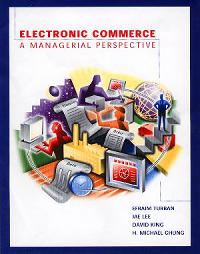
MGS 523
Seneca College, Toronto, Canada
 |
MGS 523Seneca College, Toronto, Canada |
November SECTION
| Outline A
September |
Outline B
October |
Outline C
November |
Outline D
December |
| . | Before
we move on to discuss "Promotion" in Internet Marketing it would be responsible
for us to refresh what Promotion in conventional marketing terms means
|
| . | Another
way of looking at Promotion.
The key here is not be so focused on shouting out about your product - but rather listen to what people want to hear, then give them the message in a way that will be accepted. In MGTD06 we will introduce a concept in the world of online marketing which many might agree to, but few follow. communication = listening listening = hearing © WTGR To be successful in attracting traffic, using a good domain name and brand building, you need to be more effective at hearing what the customer wants. WTGR |
Chpt 6
 |
The "Marketing Communications
Mix"
AKA promotional mix "... you must tell people
how to find you online"
"find new places and ways to publicize your Internet presence that you haven't included in your programs until now" Media Planning With Internet Resources page 144 Traditional Advertising and
the Internet page 145-149
|
Chpt 6
 |
Banner Ads page 149-151 |
|
|
The article "different types of ads" can be found at www.webdevelopersjournal.com/columns/types_of_ads.html this article is one of several in a series. The 5 part series by Morris is titled
|
|
|
interstitial is a term used in medicine to describe something between the cells, or between the layers. In online advertising, this term interstitial ads has been coined to describe those ads that pop up in your browser window as you proceed to see a new page - the ad stays there blocking the other material until you close it which is annoying - but effective since you have to notice or you can't see the other material. Susan Stellin writes that even of we don't like this, companies will still do it because it seems to be effective. Stellin quotes a number of people in the article that talk about there various experients running interstitial ads and the main point seems to be that you have to focus these on a particular segement and the content within the interstitial ads has to be pretty kewl otherwise people just find it annoying. |
|
|
Feathjerly quotes Forrester
media analyst Eric Scheirer
"Says Scheirer, as advertisers continue flocking to the Web to get the word out about their products, they will be forced to compete for many of the same "super-target" online content pages - search-query returns on Yahoo and the shopping-bot results on the MySimon.com site are two examples. But not all advertisers will be able to schedule ad appearances on those pages, nor will they wish to pay the high price those ad slots will fetch, according to the Forrester report. Instead, the study says, the trickling will begin. Just below the "super-target" site grade lies what Scheirer labels "premium" site pages, well-contextualized pages of content designed to work with targeted ads" "There is no doubt, the analyst says, that the current picture is bleak, and that many online publishers could be convinced to throw in the towel now....But patience will bear fruit, the analyst insists." |
|
|
www.webdevelopersjournal.com/articles/banner_ads/banner_advertising_statistics.html 1.Introduction 2.Comparing Clickthrough Ratios 3.Comparing Costs 4.Comparing Conversion Rates 5.Comparing Your Stats to the Averages
Morris says "Online advertising is in fact an easy thing to measure and quantify. The Internet can provide a level of detail that no other medium can ever hope to. The online advertising business is a more mature one than many people realize, and the tools to measure the effectiveness of banner ad campaigns are there for those who know how to use them." "Banner ads, as far as we're concerned, are sold by the page impression - each time a user views one Web page is counted as one impression. Prices are quoted in "CPM", a holdover from print ad days which means "cost per thousand". For example, if the CPM for a particular campaign is $20, then it would cost $2,000 for 100,000 impressions." Morris explains "Banner ads yield two benefits. First, they may entice users to click on the banner and go to the advertiser's site. Each time this happens is called a "clickthrough", and the number of clickthroughs divided by the number of impressions is called the "clickthrough ratio" or "click rate". This is easy to measure, and provides a direct measurement of a banner's effectiveness. The second benefit of ad banners is building brand recognition. Despite ad agency claims to the contrary, this is almost impossible to measure." |
|
|
Morris begins by stating that "thanks to the huge number of ad networks and affiliate programs out there, practically any Web site, no matter how small, can sell advertising. Thanks to the lubrication of computer networks, the world economy has reached a point at which you can buy or sell almost anything in any quantity, large or small." The reason that it is helpful to look at this particular article by Morris, is because of the useful list he compiles of the downsides to having ads on your site. Morris says "the tiny amount
of cash you would receive from selling ads isn't worth the drawbacks"
|
Chpt 8

Chpt 8
|
"Measuring the Effectiveness
of Web Site Advertising"
page 298 in the Schneider/Perry book "As more companies reply on their web sites to make a favourable impression on potential customers, the issue of measuring web site effectiveness has become more important"
Some people who are experts in this field use numbers related to
|
| . | Before
we move on to discuss "Branding" in the context of Internet Marketing it
would be a good idea to review briefly the basic concepts of branding as
understood in traditional marketing.
Brand Equity
The Key Elements of Branding
|
Chapter
3
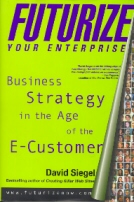 |
In Chapter 3 of David Siegel's
book, he makes the important
point on page 31 that
"... in Internet time, brands are less sticky than you might think. It takes more effort to maintain an online brand than an offline brand" Siegel cautions that in the "customer-led future, company brands will weaken significantly because companies will be pulled apart by their customer divisions, they should plan on restructuring and promoting product or even division brands" well, in several cases, this
is indeed already true among several consumer product companies. Toyota
promotes the Lexus brand as a distinct luxury brand to disassociate itself
from the mass market low price appeal of the average Toyota line-up
|

Chapter 7 |
chapter 7 Why brand-build
on the Internet
the authors discuss
|
Chpt 8
 |
"Elements of Branding"
page 305 in the Schneider/Perry book "Marketers are attempting
to create and maintain brands on the web by using rational branding.
Companies that use rational branding offer to help web users is some way
in exchange for viewing an ad.
|
 |
The key elements of branding,
which Schneider and Perry quote from ad agency Young & Rubicom
|
 |
The elements
of branding as listed by Martin Lindstrom and Tim Frank Andersen
|

Chapter 8 |
chapter 8 Strategic
building up of brands on the Internet
the authors discuss web segmentation
"to date, the most frequently used quantitative measurement of a website's success has been the number of hits... these figures tell us nothing about the actual quality of the website. At a pinch they tell us something about how good the company has been at creating traffic... the quantitative goals should be based on a number of measurable parameters which can describe the quality of the communication on the website ... goals should be set for |
Establishing Brand Presence
|
Chpt 8
 |
How Corporate Identity
Guidelines Change Online
page 219 "The ability to create special effects in HTML, such as those afforded by the use of wallpapers, may create readability or recognition problems when used alongside your company logo or wordmark"
|
Chpt 8
 |
"The true measure of a company's
market identification is in its recognition"
page 217 Corporate Identity Guidelines
Change Online
"The ability to create special
effects in HTML [and javascript and flash] ... may create readability or
recognition problems when used alongside your company logo or wordmark"
|
| . | In MGTC50 we will talk about
the technical and business aspects of "getting" a domain name, such as
registering and hosting. In MGTD06 we will discuss the marketing aspects
of having a domain name.
|
Chpt 8
 |
Unique Domain Name
page 224 "One of the biggest areas
of corporate identity confusion on the Internet is in the area of domain
names ... domain name confusion can be the source of lost revenue or a
damaged reputation for many organizations"
|
| Domain
Names |
Domain Names
(a new definition of "place") http://www.GreatDomains.com/valuation.asp "Ultimately, the value of a domain name is driven by its ability to deliver traffic and revenue to a business. This determines how much a company would pay for a domain name" If the name you want is already
taken as a domain, think of a solution name that people can remember, such
as www.earache.comif you're
into noise.
http://www.rmsmith.com/html/buy_rent_domain_names.htmleg. www.petme.com |
||||
| Domain
Names . the strategy of holding certain names |
Not everybody is trying
to obtain all the names relevant to their business and hoard this for future
use. A Reuters story in the summer of 2000 noted that giant consumer products
company, Procter & Gamble had decided
to sell off some names they were no longer going to use and P&G was
going to sell these names through an auction process to the highest bidder.
Some examples of the names
they were selling were
Interestingly, a Dr. Proctor, who spells his name slightly differently, owns the domain www.proctorandgamble.com and on his sight makes comment about how procterandgamble.com poached a large number of domain names many years ago - but they forgot about misspellings !! For a very interesting perspective
on P&G's collection of names, read the critique at
|
| Examples of companies trying to develop "product evangelism" by creating a community around the brand and other "especially innovative and exciting" situations | Beverage companies do not sell beer, ice tea and cola on the net, why do they have web sites and what do they use them for? |

 |
http://www.snapple.com/home.html
Snapple, in trying to compete against the Cola giants, Pepsi and Coke is trying to use their web site and other promotion to turn customers who are at the brand insistence stage into "evangelists". The point being not only will these people be faithful drinkers of the beverage line, but that they will be "fans" and encourage other people to drink the products. How do you facilitate their development of fan status - by giving them kewl screen savers, let them order merchandize with the logo, win prizes, enter contest etc. Snapple can also use the online site to gather specific name and address information of loyal customers which they will use in "direct mail" campaigns in ensure |



|
In April of 2000, Molson's
got much more reaction than it expected when it launched its TV commercial
"I Am Canadian".
The web site www.iam.ca on which the commercial is downloadable became, according to some accounts, the number #1 downloaded feature on the web for Canadian surfers in the spring of 2000. At the I AM website,
The questionnaire which you
fill out to get the free email includes the statement
Such customer profiling techniques were done by the American cigarette companies in the 1980's in order to develop long-term brand insistence - however it was expensive to do that then due to the amount of free merchandize you had to give away - "kewl" web sites allow this customer profiling to be less costly and you can create communities of customers that in turn create a dynamic that can be very exciting The National Post picked
up on this story of Molson and their I AM CANADIAN ad and accompanying
web site and ran a story by Jonathon Gatehouse on the patriotic fervor
created
|
| Customer
Relationship Management within
|
|
Chpt 8

Chpt 8
|
"Technology Enabled Relationship
Management"
page 300 in the Schneider/Perry book, 2nd Edition "The nature of the web, with its two way communication features and traceable connection technology, allows firms to gather much more information about customer behaviour and preferences than they can using micromarketing approaches" "Technology Enabled Relationship Management occurs when a firm obtains detailed information about a customer's behaviour
|
| Technology Enabled Relationship
Management = CRM Customer Relationship Management (with some qualification)
Technology Enabled Relationship Management would, strictly speaking, apply to customers, vendors, partners, government agencies - anything you want to have a better relationship with, using technology such as the internet As Schneider and Perry explain on page 300, the term Technology Enabled Relationship Management is not so often used and it is more common to speak of Customer Relationship Management - that is to say using the internet to facilitate longer term relationships, and more profitable relationships with customers by using internet situations - and, like many things since 1998, you can use an "e" prefix and call it eCRM |
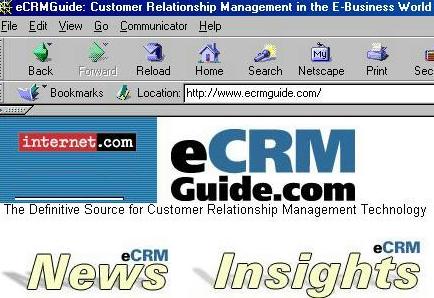 |
This is a good portal - which covers many eCRM topics |
.

Chapter 10 |
Chapter 10 "Online Communities
- the virtual marketplaces of the future"
"Why communities are so interesting to companies" page 203-205
Eg. you wouldn't sell a Harley Davidson motorcycle on the Harley site, but you do have a selection of clothing and relatively inexpensive accessory items which you can buy. http://roadstore.harley-davidson.com 
The Harley site, like many up and coming corporate web sites, is endeavouring to track visitors and collect demographic information by inviting frequent visitors to the page to sign up and login for access to special features. By offering rewards to regular visitors to the site, Harley is building loyalty and also increasing the opportunities to upsell and cross sell within the range of accessory items online. |
| Online
Communities as part of CRM |

a giant sized U.S. based hunting, hiking and outdoor equipment, supplies and services company  
Their extensive web site
enthusiastically fosters online communities
|
e-companies creating online
communities for consumer product companies
 |
"Online communities are groups of businesses, customers or employees with common interests that interact via the Internet. Communities allow companies to get much closer to their most important customers through innovative programs that inspire participation such as member-generated content, events, member-to-member interaction and outreach efforts."
http://www.participate.com/why/index.asp#null |
.
| "There is nothing more difficult
to take in hand, more perlious to conduct, or more uncertain in its success,
than to take the lead in the introduction of a new order of things"
Nicollo Machiavelli sixteenth century Florentine philosopher |
| . | The e-commerce business
model is a direct result of the drastic changes effecting the previously
well known versions of traditional business models - these versions are
being stretched by many "exceptions" caused by globalization and technology
- this stretching has caused the traditional business model to be almost
unrecognizable due to the many additional allowances we have to make for
the "e" age
WTGR "it is getting harder for
companies to deliver profitable growth on a sustained basis. It is also
more difficult for many companies to hold their ground and not fall
behind. The key reasons include the dramatic increase in complexity in
managing business and the increasing premium put on innovation. The complexity
is due to significant and irreversible changes in the business environment.
The pace of business is accelerating beyond the ability of most corporations
to adjust. "
|
| . | Several of the texts we
use in this course discuss Web Business Models. Some discuss the model
in terms of
|
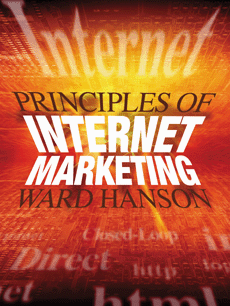 |
Hanson: Principles
of Internet Marketing Chpt 5 Web Business Models
(not a required
text)
http://simi.stanford.edu/hanson/chapter5.html Revenue based business models
p. 131- 132 Hanson text
|
|
1st edition 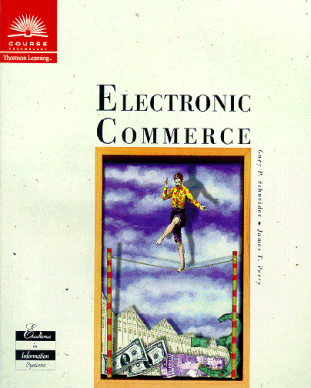
Business
2nd edition
Business
Business
2nd edition
Business
|
Schneider/Perry
Electronic Commerce
Chapter 8 the models described herein are
|
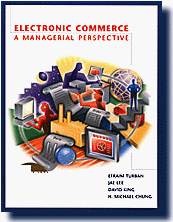
|
Turban: Electronic
Commerce: A Managerial Perspective, is not a required purchase,
but it does have several chapters that mirror topics we discuss from other
texts in this course + it has an accompanying web site + dowloadable .ppt
slides for each chapter
Internet
Business Models
The following are the "perspectives" that compose the e-business models, according to the book's authors
|
| .
.................... |
Virtual companies as
a business model
|
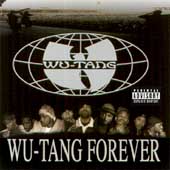 . . |
Virtual companies as
a business model
. Virtual companies are not just contained to the IT business world but exist in many types of formats in business throughout the globe. One example of the diversity in applying virtual companies as a concept is the famous rap group Wu-Tang Clan. As TIME magazine noted, (Dec 11th issue, 2000) "The Wu-Tang "brand" blossomed in 1993. Each member of the group periodically goes off and does some solo project from which they develop additional capability and experience, at the same time keeping public their alliance and affiliation with Wu-Tang. The "brand", in the form of the bands members, continue to also put out products under the bands name as well in order to maintain the value of the "base" of their individual reps. The
strength of the company, as explained in TIME, is "... maintaining just
a small core and outsourcing everything else."
The band members have so many sites devoted to their activities that Yahoo has devoted an entire Yahoo category to them http://dir.yahoo.com/Entertainment/Music/Artists/By_Genre/ Rap_and_Hip_Hop/Wu_Tang_Clan/Band_Members/ "Everything
else" is their forays into video games, clothing, comics, movies and many
other constantly new and evolving merchandise crossing over and back into
music, video, movies and the internet.
|
| In this section on shipping,
there is reference to a text that is not specific to MGS523 - you do not
have to buy this text; most of the information is "cut & pasted" below
WTGR |
Shipping
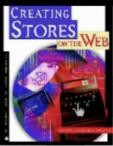
Chpt 17 |
Chpt 17, page 377 Creating Stores on the Web "Online means mail order,
and mail order means shipping. And, being an online store, you will have
customers all over the world -- some in very remote places. A significant
number of them will be used to the immediate gratification of the
Web, and that means being able to get them your goods as soon as possible.
The speed with which you can deliver their
orders can be critical to your business' success. Shipping is one
of the few things that links you physically with your customers. While
pricing, promotion, communication, and order processing can be done
virtually, the shipped package is what your customers will hold in their
hands.
The same level of speed, quality, and attention to detail you put into the Web-based portion of your store also needs to be applied to the shipping side. You should understand that no single shipping option can cover you completely and provide maximum efficiency. The challenge is to stitch together the various services, software, Web sites, and your own store into a unified model that allows customers the best coverage, speed, and pricing options. Then you have to display this "shipping stew" on your site in a manner that is easy for your customers to understand. A Web site with too many options or too few instructions is confusing to customers. When someone looks lost in a real store, the owner will notice and be able to physically respond. On the Web you won't. Customers will turn away without your even noticing as they find that you don't offer a particular option for delivery. All you will notice is lower sales. All of these are reasons why something as mundane and physical as how you organize your shipping plan is incredibly important to your store. So get to know your solutions inside and out, use the Web as much as you can, and make sure your plan is clearly displayed to users. If you maintain that and utilize the software the shipping companies offer, your customers will get nicely packaged, on-time products, and you'll get repeat business. Many of the posts on newsgroups and much of the positive e-mail Tronix has received from its customers concerns its attention to the details of shipping." Some of the text words above
come from
|
Shipping

Chpt 17 |
Chpt 17, Setting up a Shipping Account
|
Shipping

Chpt 17 |
Chpt 17, Setting up a Shipping Account Linking Shipping with Your Web Site
|
| Shipping
Problems calculating the cost Shipping Problems
|
Morphy writes "Jupiter Media Metrix statistics show that 63 percent of online shoppers back out of a purchase when they see how much they have to pay for shipping and handling. In fact, the high cost of shipping -- and the almost surreptitious, last-minute manner in which it is sprung on the shopper -- is one of the major customer complaints about online retailers." Morphy explains "... the
problem is really that consumers, perhaps subconsciously,
resent paying any
|
| Shipping
What do you
|
What do you do when you
are outside the territory they ship to
From their web site, Borderfree.com
says www.borderfree.com/bf2/jsp/com_au_our_company.jsp
who are customers of bordefree.com, companies like RitzCamera.com and BoatersWorld.com in class we will go online to RitzCamera.com and show the process |
| Shipping
the large courier and shipping companies UPS and FEDEX account for more than 80 % of online shipment deliveries |
UPS - www.ups.com FedEx - www.fedex.com DHL - www.dhl.com Canada Post www.canadapost.ca |
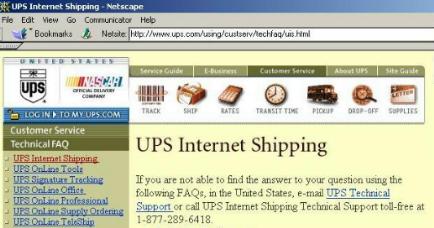 |
The UPS page which covers FAQs and other required info |
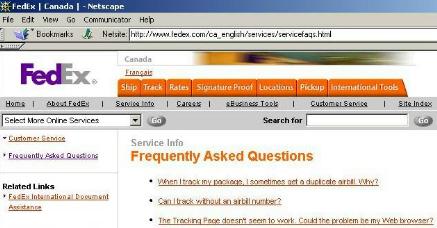 |
The FEDEX FAQ page
-they specify "Canadian" English !! |
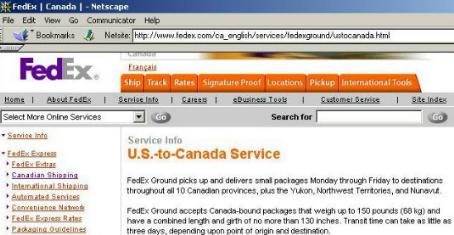 |
The FEDEX page describing the products they offer to people shipping to Canada |
Shipping

Chpt 17 Returns
Shipping
Returns
|
Chpt 17, page 397 Creating Stores on the Web Refunds
Creating Stores on the Web Chpt 17, page 398 "If you do happen to make
a mistake on a customer's shipping address, forget to check off the appropriate
method of shipping, or send them an incorrect item or quantity, show deep
concern, apologize profusely, and offer the customer free shipping on the
next order..."
#4 Plan for the flood.
#5 Deliver, deliver, deliver.
#6 Make return policies
easy and efficient.
#10 Create a service recovery
system.
|
| Shipping
The effects of
|
Morphy writes "Forrester Research was not overly enthusiastic about holiday shopping prospects for online retailers -- even before September 11th. Now, the consulting company is warning of another problem that could affect consumer confidence unless retailers take proactive measures: shipping. " Security Delays: Heightened security at ports, fortunately, is only delaying shipments by hours, not days -- so far. If U.S. Customs starts turning spot checks of containers into full searches, however, holiday orders could be delayed until it is too late, Forrester warned. Aircraft used in shipping:
Another possible cause of delays is the Civil Reserve Air Fleet
"Forrester also predicted new shipping-related services will develop in the long run that will change holiday shopping patterns for retailers and consumers. Buying cycles will change, the consulting firm forecast, as shoppers buy and ship for the holidays throughout the year to get their gifts on time. " |
||||
| Shipping
The effects of
|
"While there are no easy answers, the Ontario Trucking Association is now calling upon motor carriers, drivers and shippers to work together to ease the pressure at congested border crossings and keep essential deliveries moving as seamlessly as possible. "The backlog of trucks at the major Ontario-U.S. border points is testing the limits of the North American distribution network, and no one is expecting things to change in the foreseeable future," OTA president David Bradley said. For that reason, the OTA is stepping in to help Canadian federal and provincial authorities ensure that essential shipments receive priority attention." |
| Shipping |  -an
example of how some of the large consumer product companies have diversified
into the shipping business -an
example of how some of the large consumer product companies have diversified
into the shipping business |